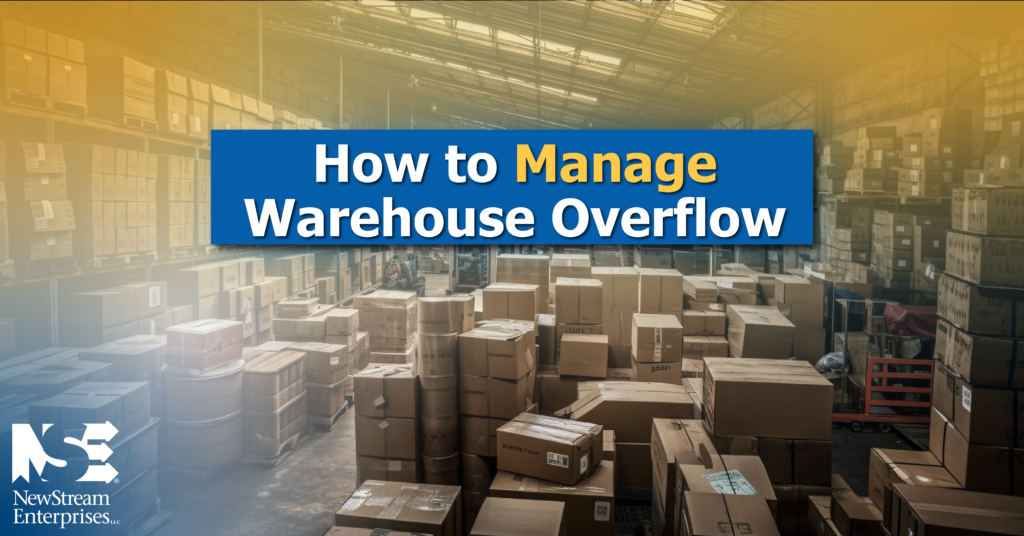If your company has reached its warehouse storage capacity, you’re likely taking a productivity hit. Crowded or unorganized aisles significantly impacts warehouse efficiency, which can cause your operations to back up and adversely affect your bottom line.
Properly managing inventory is a common challenge but dealing with an overflowing warehouse doesn’t have to be an ongoing issue for your organization. Below are some of the common warehouse overflow problems that companies face and proven warehousing overflow solutions to help when you have too much stuff and not enough room to store it.
Warehouse Overflow Problems
Many of the inventory-related issues companies have to deal with occur in these areas.
Inventory control
The point of inventory control is to manage items in your warehouse in a way that maximizes profit while minimizing inventory investment. Inventory management includes raw materials availability, finished goods availability, work in progress, inventory reorder points, bottleneck improvements, overflow management and outsourcing. Because some warehouses carry inventory from various manufacturers and retailers, it’s also important to account for the source of overflow issues.
Tracking methods
Products may get stuck in storage if workers aren’t scanning or taking account of the items in overflow and having inventory in “no-man’s land” is not good for business. Reviewing your current product tracking methods can reveal overflow products that might get overlooked.
Designating overflow locations
If your overflow products aren’t stored in designated locations, they are difficult to track and may end up getting mixed back in with the rest of your inventory. Designating specific overflow locations helps keep overflow out of the way of in-use inventory.
Inventory updates
Irregular overflow updates can result in significant issues popping up in the future. The problem with overflow is that it is often overlooked. But even after tracking methods are in place and products have a designated home, overflow inventory still must be reviewed regularly.
Warehousing Overflow Solutions
Warehouse overflow problems can be effectively addressed with two different methods. The first warehousing overflow solution involves creating and maintaining a process to better manage warehouse overflow in-house. This can be accomplished with a more strategic inventory plan that focuses on addressing the common core overflow problems of inventory control, tracking methods, overflow locations and updating overflow status.
If your current inventory flow is efficient and you still have a problem with overflow, it may make sense for your business to look at the second method for addressing the issue: working with a warehouse outsourcing company. Finding a partner warehouse for overflow storage is often the best warehousing overflow solution, in part because it is much more cost-effective than building a warehouse or expanding an existing facility.
Outsourcing is a great way to save time and money while keeping your team focused on what they do best. Managing your warehouse overflow can be as simple as letting a trusted warehousing partner with the experience and the available space do it for you so your company can work on increasing your sales and revenue.
Ready to get your inventory under control? Let’s talk, our experts are ready to help!



